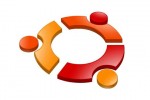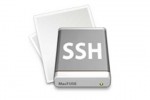Dual Boot Ubuntu and Vista

How do we dual boot Ubuntu and Vista, or Windows 7, where you have Windows Vista or Windows 7 installed first.
So you got a computer running Vista and like to dual boot between Vista and Ubuntu. The boot loader that ships with Vista can be a real pain. There are some nice utilities we can use to make that process a lot smoother for us. Here we go.
Create a partitionFirst you’ll need space for the Ubuntu installation. If you don’t already ...
How to find memory usage by process?

As Linux system administrators, you take pride in being able to setup and maintain systems from the command line. But learning is never ending, and new tasks require a bit of research to find the correct tool for the job. Knowing more command line tools as you grow more experienced is a character that becomes evident in any seasoned veteran admin. One of those commands is to find memory usage by process.
Finding the processes that use most memory seems like ...
32-bit versus 64-bit, which one should I choose?

A common question that pops up from time to time is whether someone who has a 64-bit CPU (such as an AMD64 or an Intel EM64T) should install a 64-bit or 32-bit version of the preferred OS. Since these processors are capable of running either one at full native speeds, what are the advantages and disadvantages to both? 64-bit just sounds cool and faster, but we all heard about headaches installing the OS, drivers and software. Are they still valid ...
Install Ubuntu 9.04 / 8.10 without CD or USB

I rarely do upgrades and try to avoid them whenever possible, instead do always fresh installs as I like to do house-cleaning when upgrading to a new version of OS. As I have a separate /home partition, this doesn’t affect any of my settings and only takes 1-2 hours (less than one hour on a high speed Internet connection), which is comparable to the upgrade option from within 7.xx.
What is UNetbootin? UNetbootin creates a boot option in GRUB or the ...
Mount Remote Folder with SSH using SSHFS

If you do any type of serious web or application development, you’re certainly used to working with remote servers and networked systems. You work locally, create test cases and do some kind of qa before deploying to the live system. But what if your qa / test system is also remotely? Wouldn’t it be nice if you could just work as if your files were local and have changes sync automatically?
Mount remote folder with ssh using sshfs makes it possible. ...
